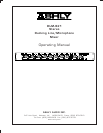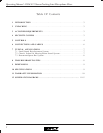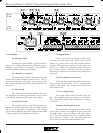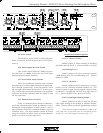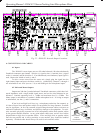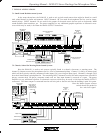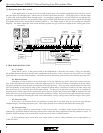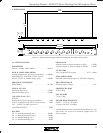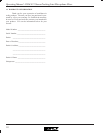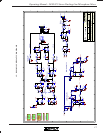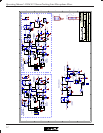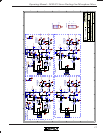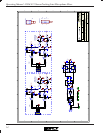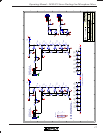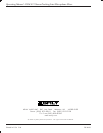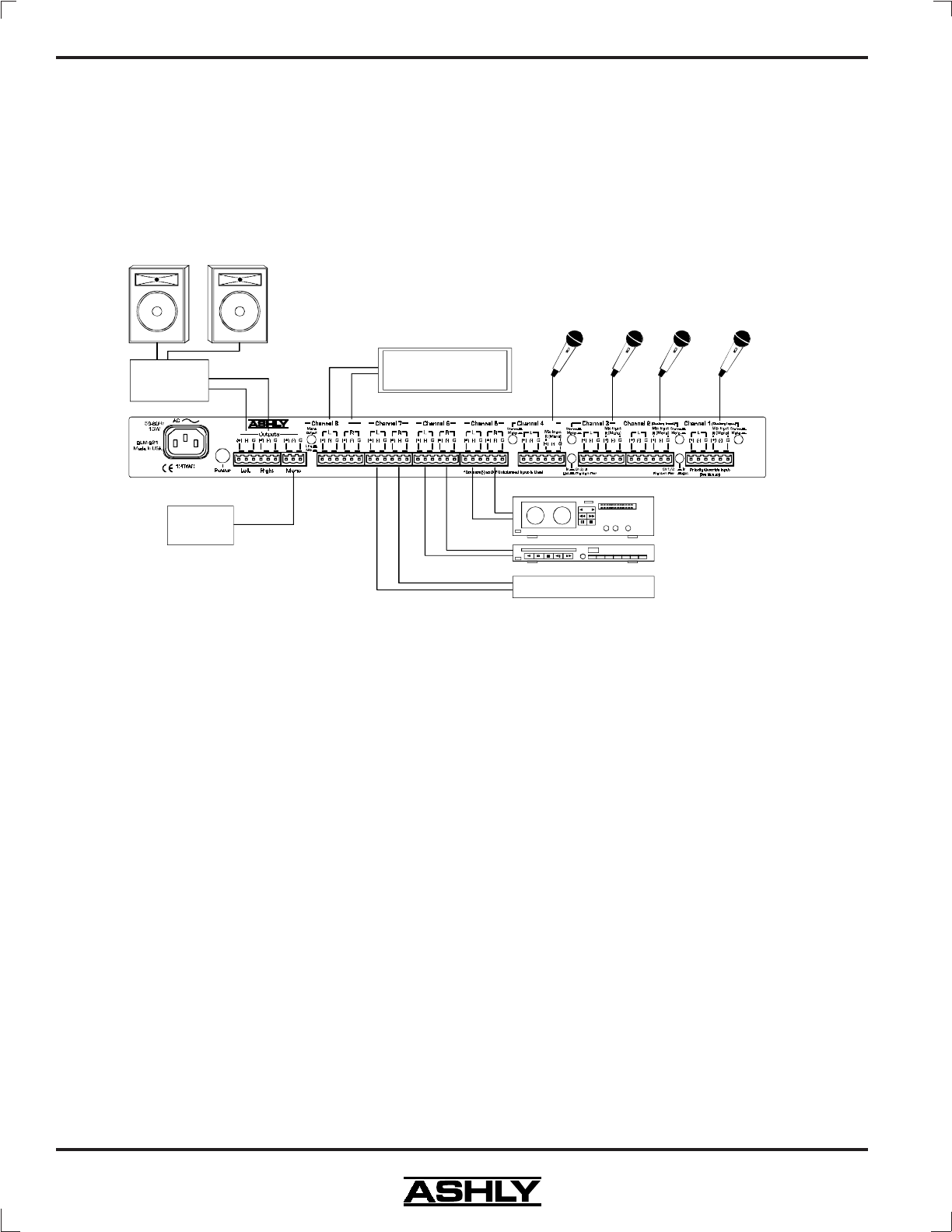
8
Operating Manual - DLM-821 Stereo Ducking Line/Microphone Mixer
7.3 Restaurant/Sports Bar System:
In this application, a variety of line level audio signals (tape, CD, satellite background music and TV) are fed
into line inputs five through eight. Talent mics are fed into inputs three and four. A host paging mic is fed into input
2 which will duck (attenuate) three through eight. An emergency paging mic is fed into input one and channel one
priority is internally selected. An emergency page signal will then fully attenuate all other inputs. Inputs one through
four should all have their Stereo/Mono switches pushed in. The Mono output is fed into an existing mic mixer/PA
amplifier. The Mono output Mic/Line switch should be pushed in to give a mic-level output to this existing mic mixer.
Talent Mics
On Ch. 2 - 4
(Mono Switch In)
Stereo Speakers
DVD/CD Player
Satellite Background Music
Stereo
Power Amplifier
Tape
Satellite TV Audio
Host Mic
(Ducking)
Emergency
Page
(Priority
Ducking)
Outdoor
Loudspeaker
Output
8. TROUBLESHOOTING TIPS
8.1 No Sound
Check the AC power. Is the power switch on and illuminated? Check the level meters. If they are operating,
the problem between the mixer and the later components in the system. If not, check to see you really have an input
signal and that it is on the desired channel. Check that you have the master gain controls at the desired operating level.
8.2 Distorted Sound
Something is being overdriven in the signal path. If the clip indicators are active, reduce the channel level con-
trols. If the clip indicators are still active, reduce the input signal level. If the level meters are constantly in the red, reduce
the Master gain and increase the gain of components following the mixer. There are many gain adjustments in the mixer
itself and probably several others in other system components which makes it possible to overdrive an input section and
then incorrectly try to reduce the gain of the output section. The best way to approach setting gains is to establish the
operating level of input stages first by setting their gain as high as possible but leaving about 20dB of headroom for loud
peaks, then move on to set the master gain to produce a good meter reading. Proceed to set the gain of equalizers, limiters,
crossovers, and amplifiers following the mixer in the same manner, always working toward the later stages of the system.
8.3 Excessive Noise
If the noise is in the form of hiss, the problem is usually due to an input stage set up for low gain and then
compensating by increasing the master gain. Turn up the channel level controls and reduce the master gain.
8.4 Excessive hum
This is usually caused by "ground loops" in the system wiring. A complex sound system with many sources
separated by significant distance and using several power outlets has many opportunities for this problem to occur. If
possible, feed everything in the system from one power source with a common ground.
If you need help, get in touch with your Ashly dealer or call an Ashly technical service representative at
1-800-828-6308.



